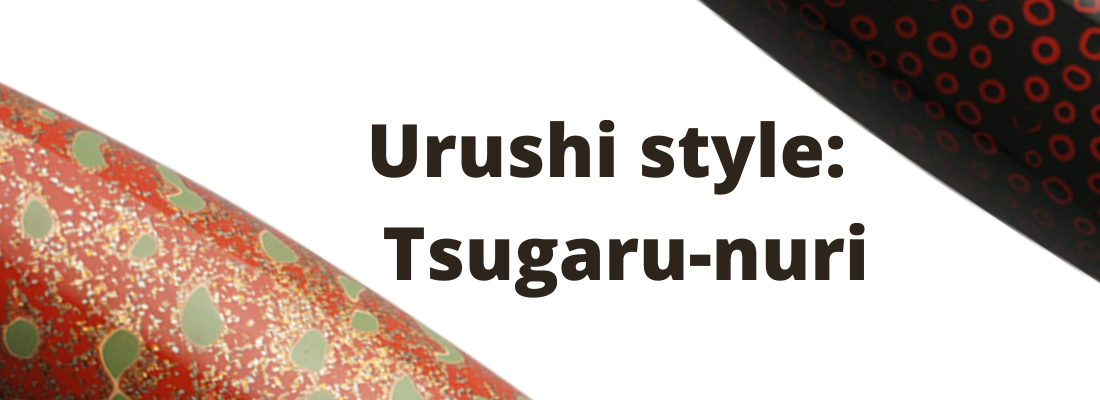Urushi artisans use a vast array of techniques to achieve their desired effects. Using tsugaru-nuri, for instance, the artisan can display multiple urushi colors along a smooth surface. There are four types of tsugaru-nuri, but we’ll limit our discussion to the two forms that appear on UrushiPen.com: kara-nuri and nanako-nuri.
Tsugaru-nuri as a whole originated about 300 years ago in Japan, in the Tsugaru region of the Aomori Prefecture, in Japan. Winters in Aomori are long, cold, and snowy. Some artisans say that the long winter gives them time to work on their tsugaru-nuri projects.

Modern location of Tsugaru, in Aomori Prefecture, Japan
The ‘nuri’ in the name means “coating” (as in, the lacquer-making process). Therefore the name means, “urushi process from Tsugaru.” Over the years, tsugaru-nuri has remained the defining traditional craft of the Aomori region, and the Aomori Lacquerware Federation is based in the city of Hirosaki, in Aomori Prefecture.
All tsugaru-nuri begins with an astonishing 48 layers of the base lacquer (urushi), before any advanced work is done. Each layer must be applied, dried completely, and burnished, when the cycle is repeated for the next layer. When enough layers have been applied, the artisan moves on to the next stage of creation.
Kara-nuri
The pen may call for kara-nuri. In this style, sporadic raindrop shapes are applied to the object of design.
The artisan applies urushi in the raindrop shapes with a specialized tool called a shikake-bera. These ‘drops’ of urushi must also be dried thoroughly before moving on to the next step.

The kara-nuri process allows for multiple colors to show through. In the purple fountain pen above, we can see the base purple color, plus black, gold, and a bit of red. The artisan achieves this effect by applying layers of numerous urushi colors. After multiple layers have been applied, sanding and polishing can begin. At this point, the various colors emerge.

Nanako-nuri
Nanako-nuri is the other form of tsugaru-nuri used on pens at UrushiPen. It is achieved using an entirely different process.
‘Nanako’ means fish egg, and you can see below why it is so named. The technique creates tiny circles that resemble fish eggs.

After the initial 48 layers of urushi are applied, another wet layer of urushi is laid down. Then small, round seeds are stuck to the wet urushi. Often, rape seeds are the type of seeds used for this process. It might sound strange, but it works.

When the urushi has hardened, the seeds are scraped off with a special tool. Tiny divots are left in the urushi lacquer.
The artisan applies additional layers of lacquer, allowing for varying colors. When enough layers have been applied, buffing and polishing begins. Tiny fish egg-shaped circles are revealed.

In total, a single pen body with tsugaru-nuri can take more than two months to complete. Tsugaru-nuri has even been called “the fool’s lacquerware” because only a fool would invest so much time in a single piece. But seeing the end result of this masterpiece, there is no doubt the elegance and grace that these patterns exude makes the time worthwhile in our eyes.
Explore all our tsugaru-nuri pens on our website. You may find one that calls to your spirit and leads you to the snowy land of Aomori.
References
All About Japan, Aomori's Stunning 'Tsugaru-nuri' Lacquerware.
Lyn, Bernard. Maki-e, an Art for the Soul. Win Yuan Enterprise Co., Ltd., 2003.
Tsugarunuri.org, About the Federation.


